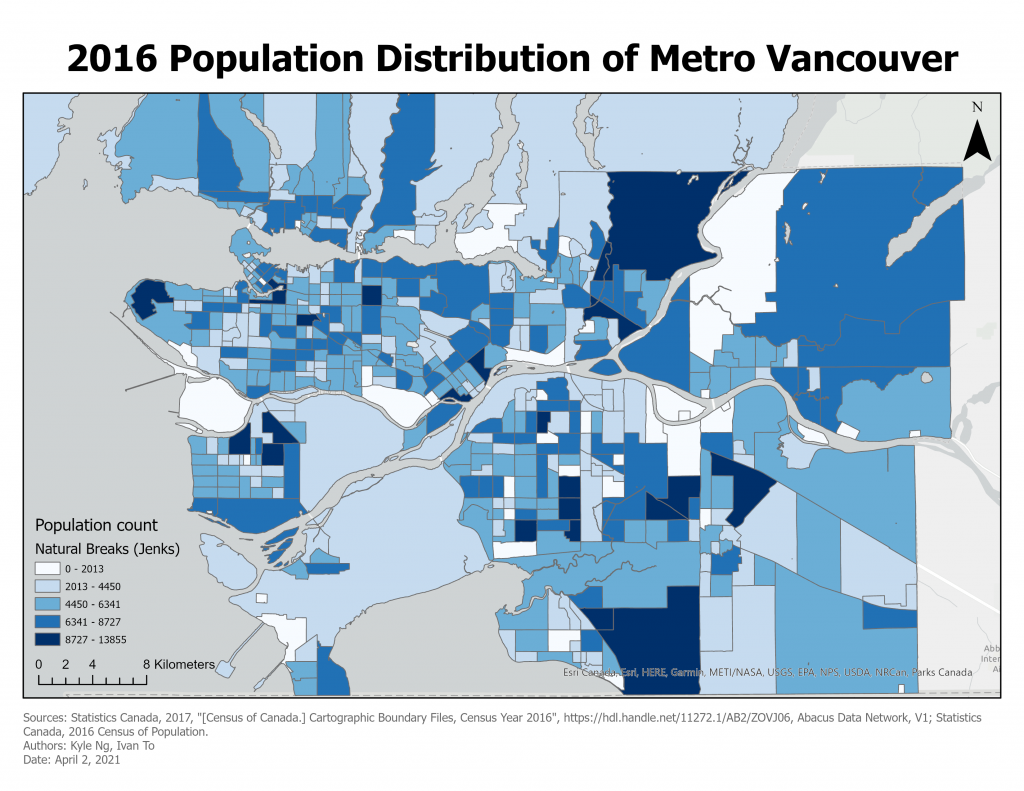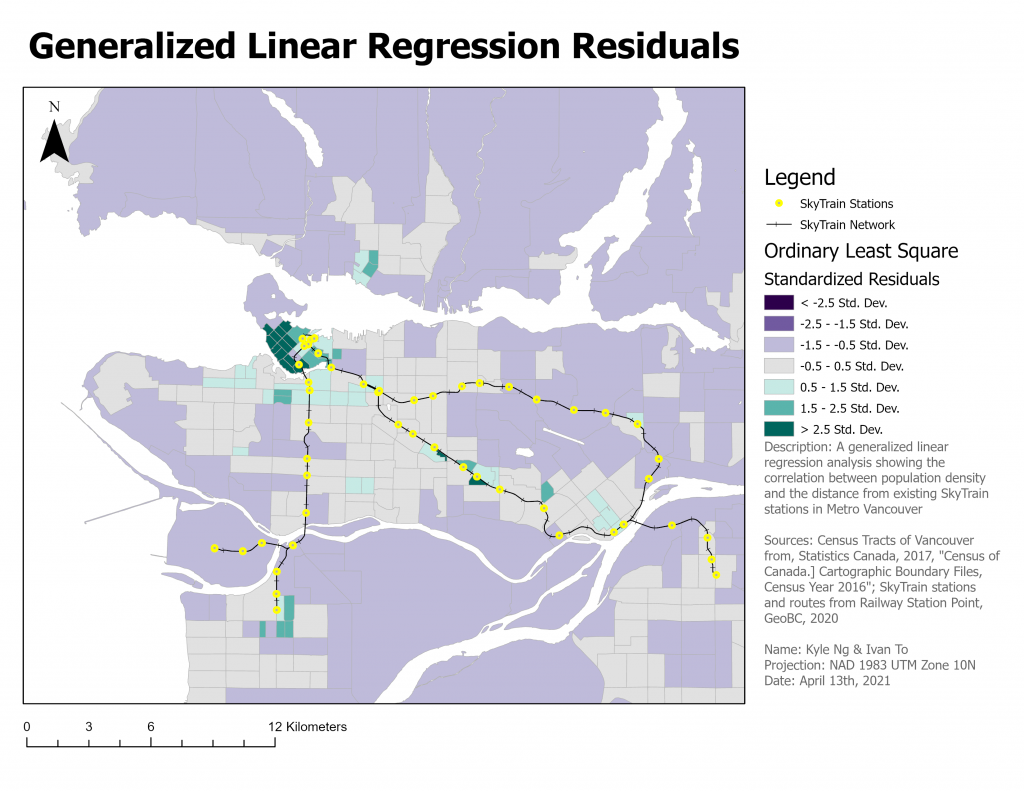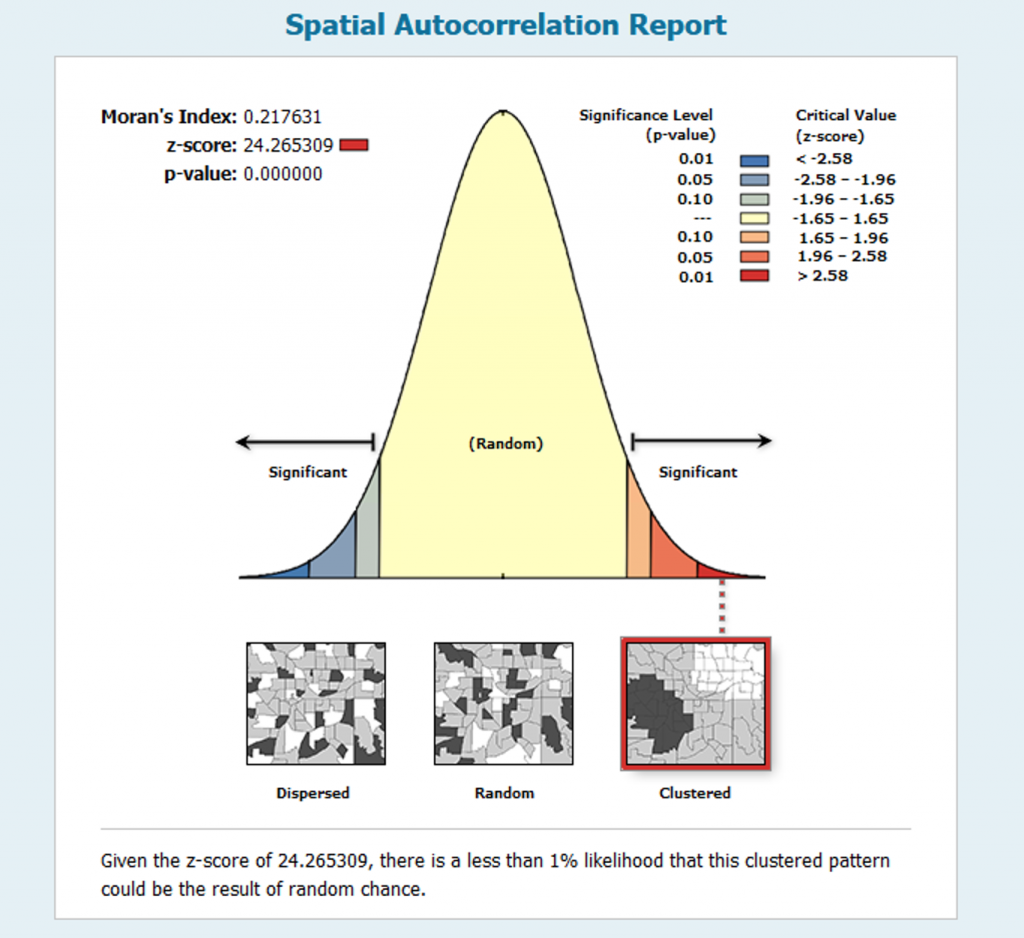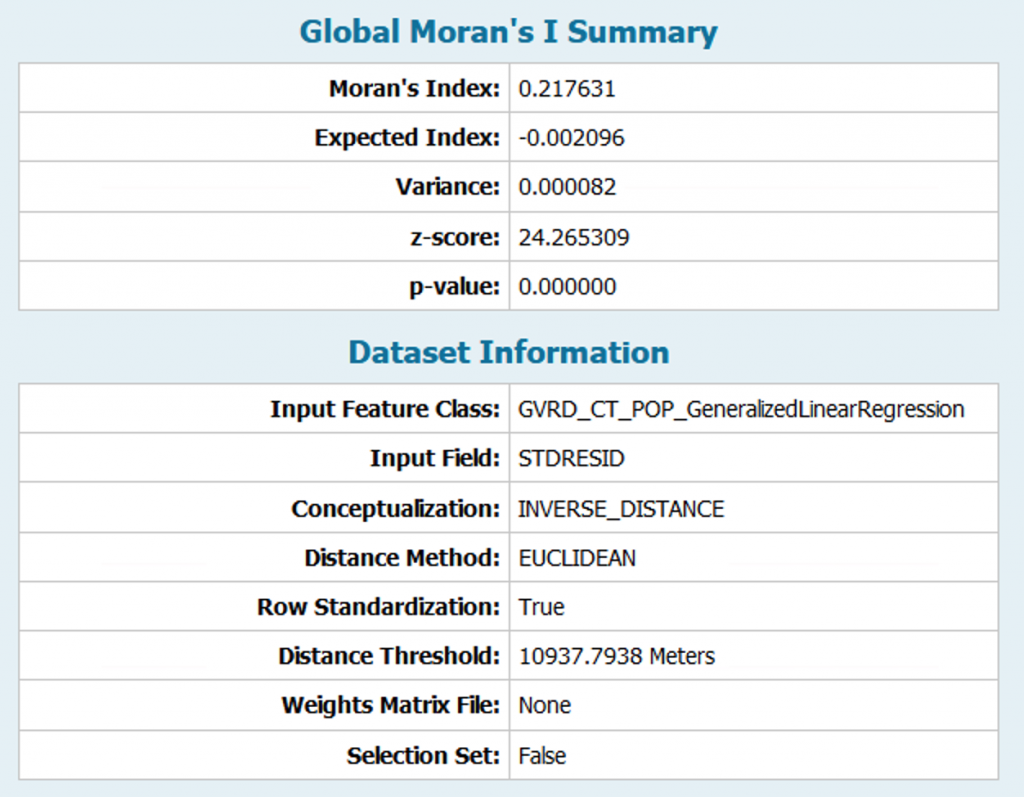Population:

Near/buffer:

Regression Analysis:
Population:

The result of the population of Vancouver in 2016 provides us an insight into which area high population in Metro Vancouver. We used the natural break to classify the population distribution of Metro Vancouver census tracts. As the map show, the high population regions are Downtown Vancouver, Burnaby, Richmond, and Surrey. This suggests that we should focus on creating new SkyTrain stations around these regions to make the SkyTrain system efficient.
Distance:

The result of the map reveals the cover area of each SkyTrain station within 1 km and the distance between population dwelling and SkyTrain stations. As the map demonstrates, it is clear that the existing Skytrain stations do not cover the whole Metro Vancouver. Some districts such as the West side of Vancouver, Richmond, and Surrey have high population, but do not have any SkyTrain line covers the whole district. This concludes that the existing SkyTrain is not convenient for all residents, and we need to propose new SkyTrain lines for districts that have a high population.
Generalized Linear Regression Residuals:

The map result reveals that the regression to find out the correlation that SkyTrain stations are located in high density area. In the map, the dependent variable is population density, and the independent variable is the distance between of census area and SkyTrain stations. Based on the map result the correlation is low. Only downtown areas have high population density with SkyTrain stations near the area. In other areas such as UBC and the west side of Vancouver, the correlation is low as not SkyTrain stations are closed to the area. After the result of the Generalized Linear Regression, we also did Spatial Autocorrelation to find out the correlation between existing SkyTrain stations and population density.


Based on the Spatial Autocorrelation Report, the p-value of the spatial autocorrelation report is 0.0000, which is statistically significant. The score indicates that there is no correlation between high population density and SkyTrain Station. Therefore, we can reject our hypothesis that the current SkyTrain Stations are located in high population density areas.
